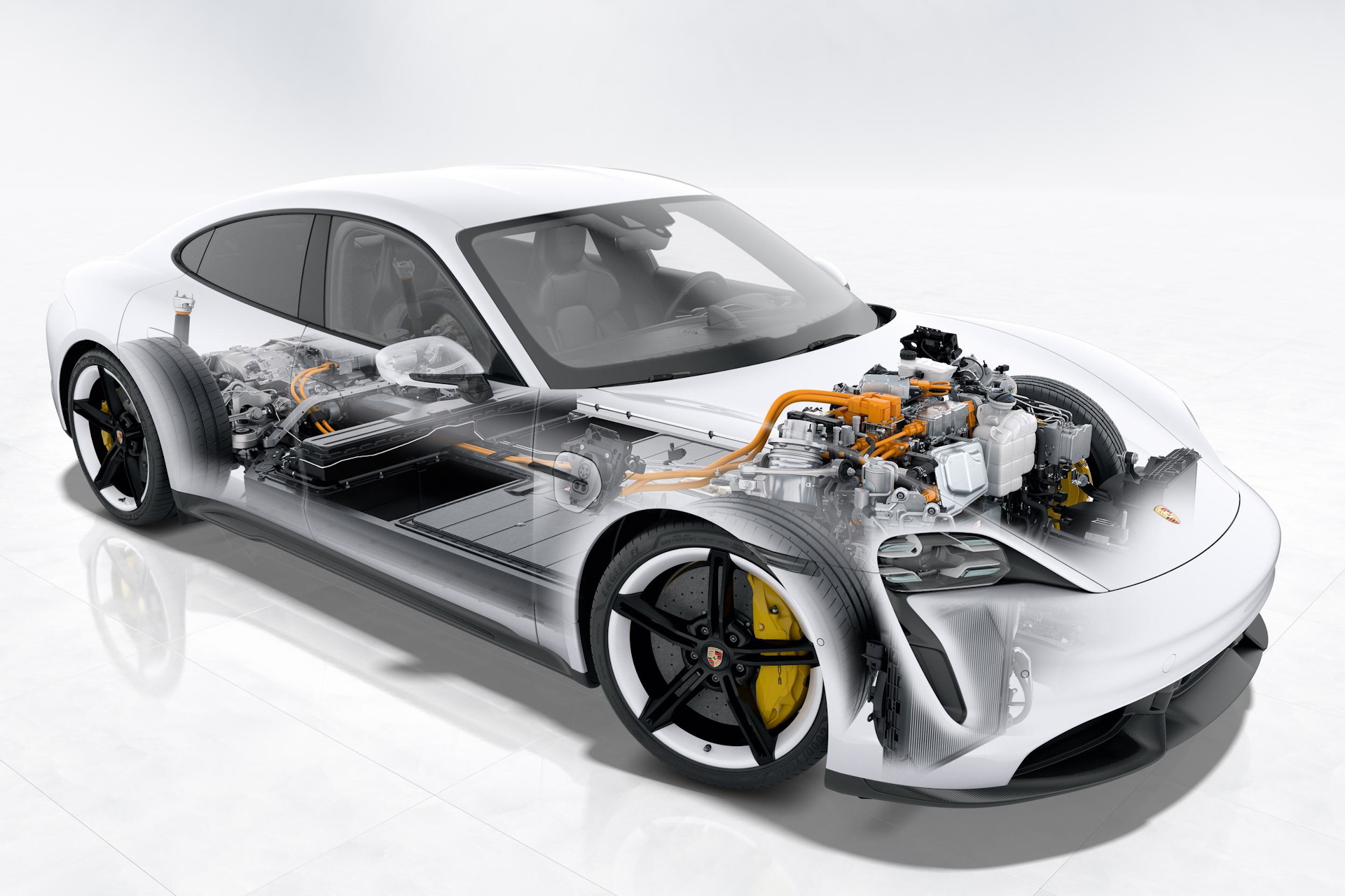Published date: March 2, 2023
How do I make use of regenerative braking in my Porsche Taycan?
How do I make use of regenerative braking in my Porsche Taycan?
Have you wondered how regenerative braking works? Without a dedicated “one-pedal driving” mode, how can you take advantage of this essential feature in your Porsche Taycan? Here's what you need to know to inform your next drive.

What is regenerative braking?
In practically every electric vehicle regenerative braking is an essential feature, allowing energy recovery when decelerating. Instead of relying on friction brakes, which exclusively generate thermal energy to slow the vehicle down, regenerative braking allows the vehicle’s electric motors to run as a generator when slowing down. This enables substantial retardation force, while also feeding electricity back into the battery.
What is a “one-pedal driving” mode?
To maximize regenerative braking, many electric vehicles offer a “one-pedal driving” mode, which effectively allows drivers to use the accelerator pedal to send power to the wheels, as well as slow down. One misconception concerning such a driving mode is that the brake pedal is rendered completely unnecessary. Although regenerative braking is substantial enough for the friction brakes to remain untouched most of the time, it is still required to preserve them as a backup, and ensure maximum stopping power when needed. Saving energy is a noble motive, but in any case, safety comes first.

Is there a “one-pedal driving” mode in my Porsche Taycan?
No. Where the Porsche Taycan differs from most conventional electric vehicles is that it does not offer a “one-pedal driving” mode at all. A Taycan driver will switch between the accelerator and brake pedals as a traditional internal combustion engine-powered vehicle would. To those familiar with the concept of regenerative braking, this may initially seem wasteful. All of that electrical energy, which could be returning to power the vehicle, may very well be wasted with a single tap of the brake pedal!
Porsche’s approach to regenerative braking, however, supports this control logic. When a Taycan driver presses the brake pedal, the vehicle’s electronics will intelligently determine the maximum amount of regenerative braking that the powertrain can provide, and calculate how much additional friction braking is necessary to slow down the vehicle in a natural-feeling manner. To determine what percentage of your braking input is regenerative, and which is friction-based in your Taycan, you can simply refer to the “Power” meter in the gauge cluster.

How much energy can I save through regenerative braking in my Porsche Taycan?
Porsche claims that because of this complex programming, in everyday driving, the Taycan's energy recuperation management system can recover up to 90% of the energy that would otherwise be lost during braking. Recuperation power from the vehicle’s motors alone can reach up to a staggering 290 kilowatts. But why the need for such an elaborate arrangement, and not the “one-pedal driving” mode found in other electric vehicles? The answer stems from Porsche’s historical position, as a manufacturer of sports cars capable of managing over 300 kilometers per hour on the German Autobahn. According to Ingo Albers, Porsche’s Head of Chassis Development, with “full braking from a top speed in a fully loaded Taycan, a maximum braking capacity of more than two megawatts must be applied… the electric powertrain cannot do that alone [and] the conventional wheel brake is then applied to a higher degree”.
In summary, while it may not seem apparent at first, nearly every press of the brake pedal in a Porsche Taycan will activate regenerative braking to slow the vehicle down. While this particular model lacks a dedicated “one-pedal driving” mode, its computers are constantly at work, determining the most effective blend of braking methods necessary. Rest assured that your Taycan will offer optimal regenerative braking when possible, but is capable of immediately employing its powerful friction brakes to protect you in an emergency situation.
Porsche Taycan tech specs
The Taycan is a high performance sedan capturing Porsche's famous racing drive and unique styling. Its base model has 208 miles of range, and 79.2 kWh battery. In only 5.1s it goes from 0 to 60 mph, and its maximum track speed is over 140 mph.
If you are using a regular home outlet to charge your Taycan, it may take over 26 hours to charge from 20% to 80%. Since the Taycan has an onboard charger of 9.6 kW capacity, a 40 amp level 2 charger can fill your battery in less than 5 hours. Charge smarter with a Level 2 charger!
Lectrium upgrades dealership EV detail pages with impactful data and visuals for shoppers considering electric.
The EV Savings Badge: Join 300+ dealerships across the U.S. showcasing EV ownership savings on their website. Highlight federal and state tax credits, fuel cost savings, and maintenance savings for each EV and PHEV in your inventory.
The EV Range Map: Join 200+ dealerships addressing range anxiety by helping their customers visualize the range of each EV and PHEV inventory on an interactive map.
The CO2 Savings Badge: Our newest tool showcases the environmental impact of your electric inventory, providing easy-to-understand CO2 emissions savings data.
Enable shoppers to make informed purchasing decisions, and emphasize the value of your EV and PHEV inventory by bundling these tools on your website. Book a meeting with our team to get a full demo.
Subscribe to our EV newsletter for dealers
Join 9,000+ other automotive professionals diving into EVs and streamlining their EV sales processes!
Follow Lectrium‘s latest news on LinkedIn
2024 Lectrium. All Rights Reserved


